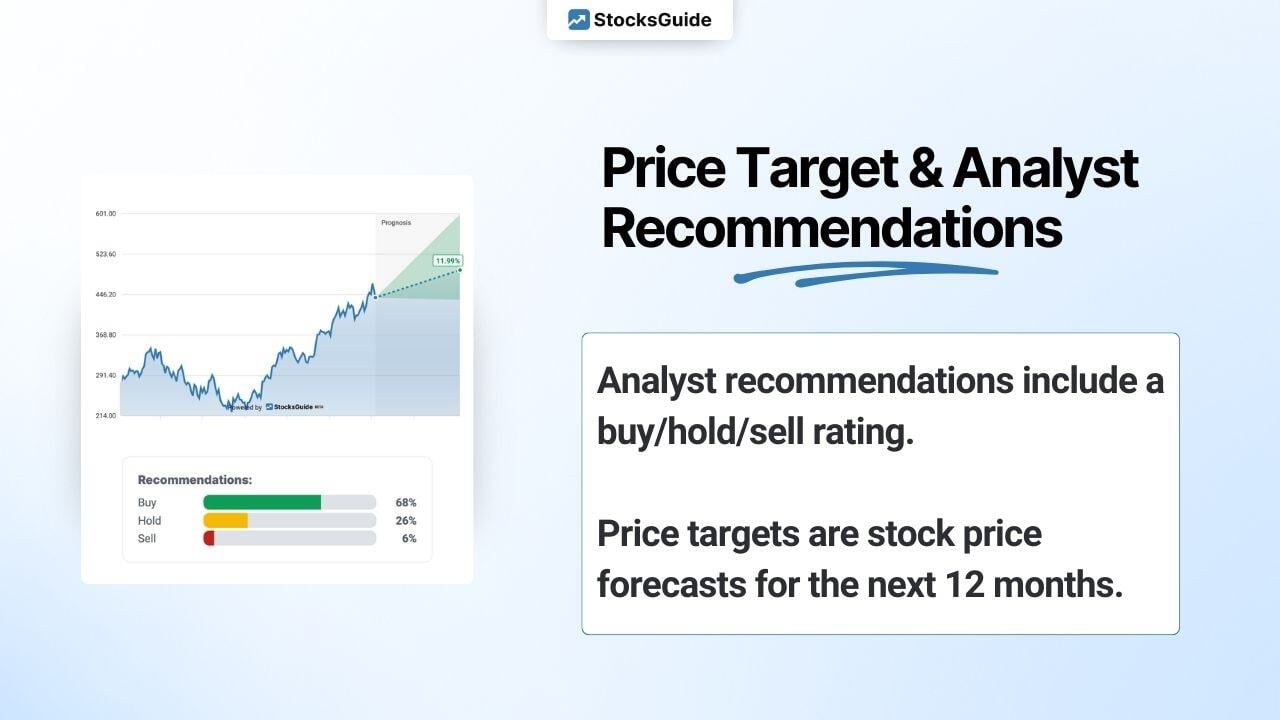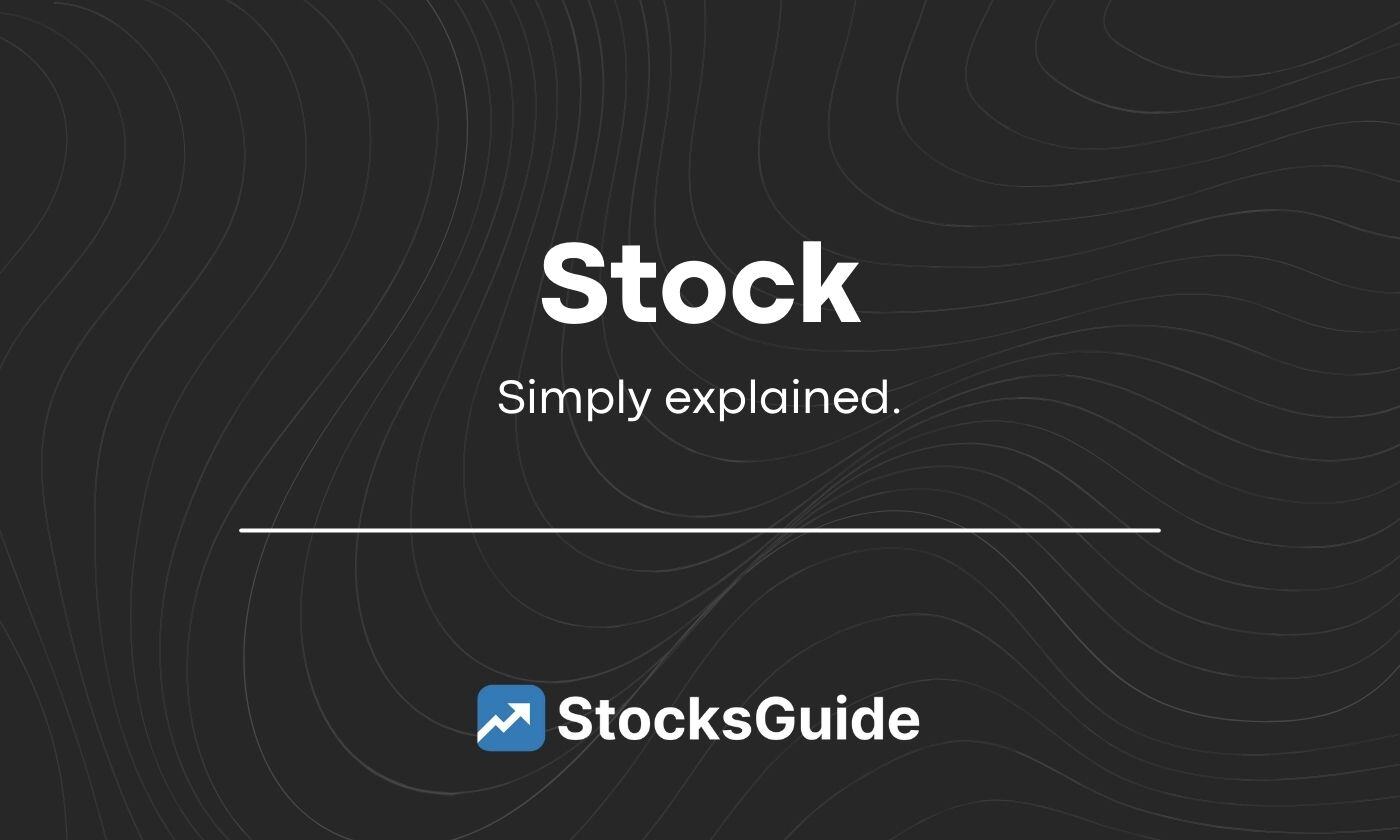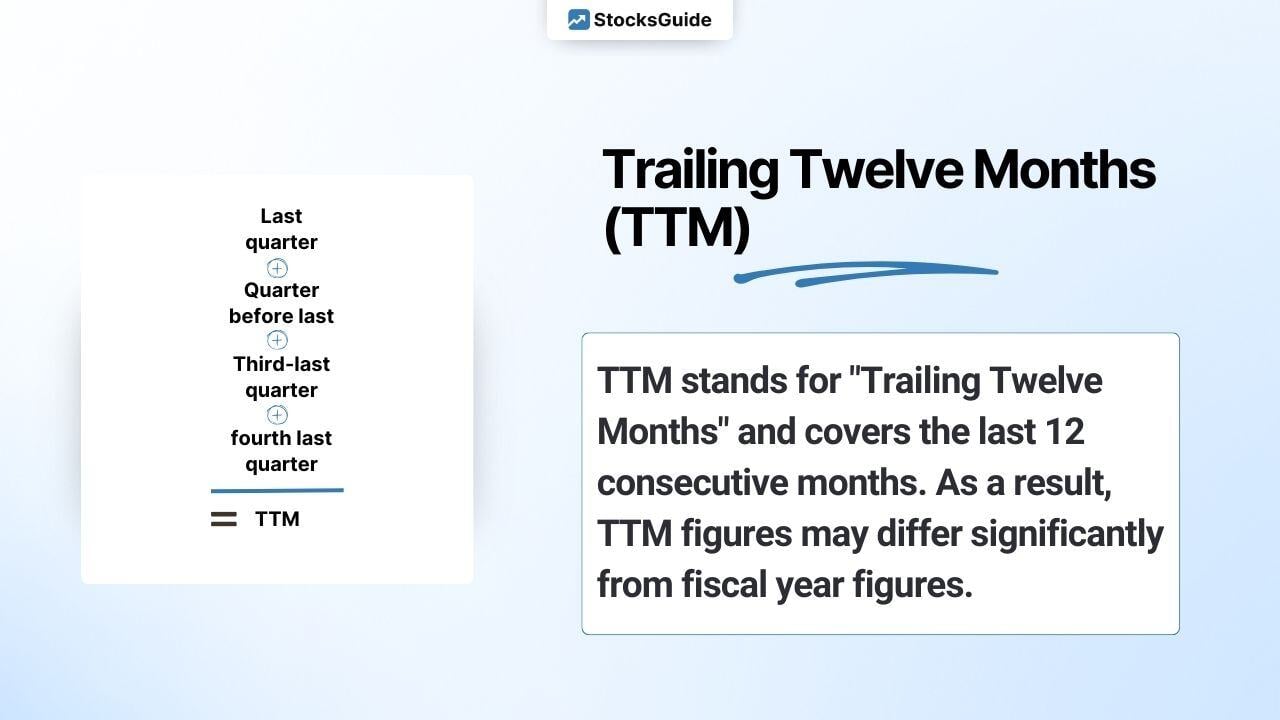In this blog post, you'll learn everything about analyst recommendations and price targets and where to find them on StocksGuide. We’ll explore why these insights are essential for investors and how to interpret them to make informed decisions.
Table of Contents
- What are Analyst Recommendations?
- How are Price Targets Determined?
- How to Interpret Analyst Recommendations and Price Targets?
- Using Analyst Recommendations and Price Targets
- Analyst Estimates for Revenue, EBITDA, and Net Profit (including Margins)
- Analyst Estimates for EPS, P/E Ratio, and EV/Sales
What are Analyst Recommendations?
Analyst recommendations are assessments from stock analysts indicating whether to buy, sell, or hold a stock. These come from investment banks and independent research firms and include buy, sell, and hold recommendations.

On StocksGuide, you’ll find price targets on the Analyst page. The number of estimates is important as it reflects various opinions and perspectives. Hover over the respective bar to see the absolute count of estimates.

A larger number of estimates provides a broader view and allows you to compare different viewpoints, indicating consensus or disagreement among analysts.
How are Price Targets Determined?
Price targets estimate how high or low a stock price could go in the next 12 months. Analysts set these targets based on their analysis, considering factors like the company’s financial situation, market development, and competitive environment. These targets help investors gauge potential stock performance.

Always check the disclaimer on each Analyst page: “Analysts don’t have a crystal ball but represent market opinions. Use price potentials and ratings as additional tools for your own analysis.”

The number of price target estimates is crucial as it indicates various opinions. A larger number reflects market sentiment and analyst expectations, allowing better assessment of prediction reliability. Similar targets among many analysts suggest consensus and trustworthiness.
How to Interpret Analyst Recommendations and Price Targets?
Remember, analyst recommendations and price targets aren’t guarantees of stock performance. Conduct your own analysis and consider various perspectives for informed decisions. Trust your judgment and align investments with your goals and risk tolerance.
- Recommendations: Indicate whether to buy, sell, or hold. Buy suggests positive performance, sell indicates expected decline, and hold means maintaining current positions.
- Price Targets: Indicate expected price changes within a timeframe. Higher targets suggest positive outlooks, lower targets suggest negative outlooks. Charts show average, maximum, and minimum targets, which can be influenced by various factors.
Using Analyst Recommendations and Price Targets
Use these insights as one of many information sources for investment decisions. Combine them with other analyses, like fundamental analysis, and avoid relying solely on recommendations.
Analyst Estimates for Revenue, EBITDA, and Net Profit (including Margins)
After price targets, you’ll find estimates for revenue, EBITDA, and net profit on StocksGuide, displayed graphically.

You can view individual or multiple metrics and see the resulting growth estimates, like for net profit.

Analyst Estimates for EPS, P/E Ratio, and EV/Sales
Besides revenue, EBITDA, and net profit, estimates for metrics like EPS, P/E ratio, and EV/Sales are also forecasted. These are located at the bottom of the page.





